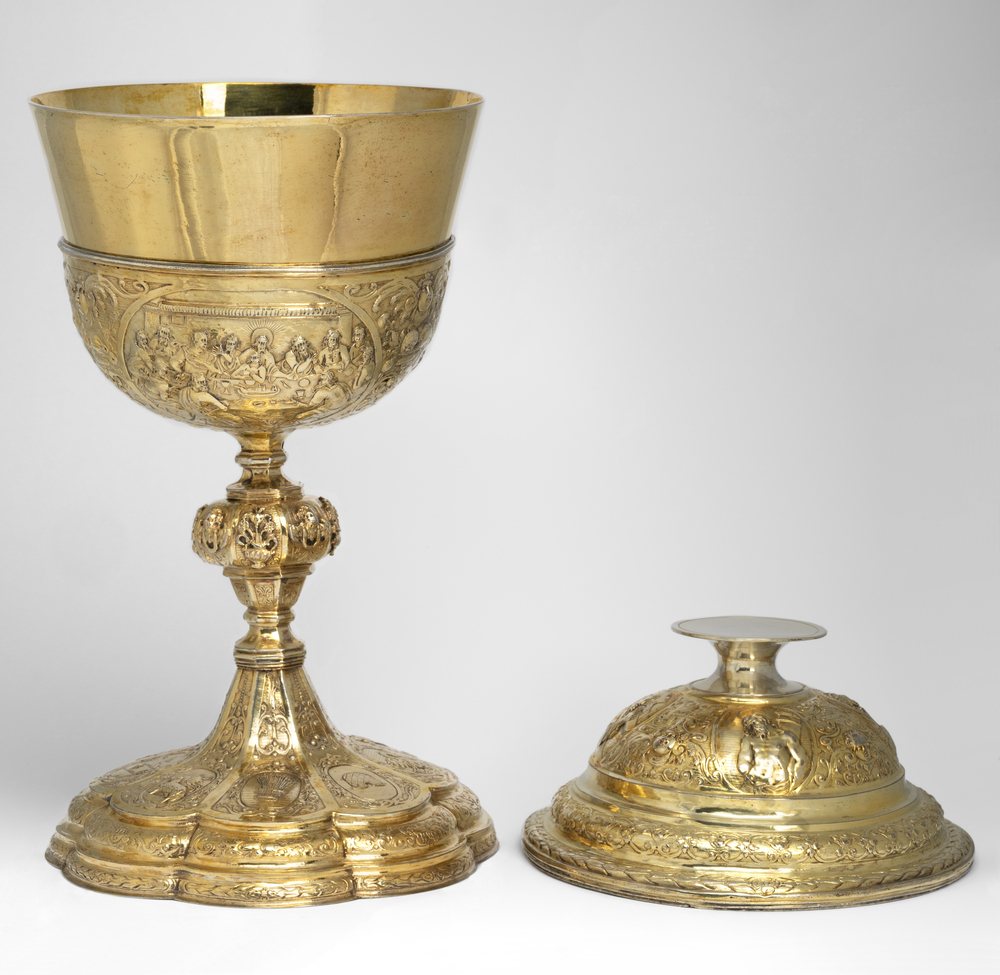
Ciborium with The Fall of Manna, Last Supper, and Supper at Emmaus, and cover with vignettes of The Passion of Christ
The Passion of Christ The ciborium is used during Holy Communion to hold the bread, normally in the form of unleavened wafers (recalling the Passover Matzah) called ‘hosts’ from the Latin 2019-12-04- ‘hostia’ meaning sacrificial victim. The bowl of this beautiful example is decorated with three key revelatory ‘bread’ episodes from the Bible: the Fall of Manna (when God fed the Israelites with bread from Heaven), the Last Supper (when Christ broke bread with his disciples, foretelling his death and instituting the Eucharist), and the Supper at Emmaus (when the Risen Christ revealed himself to two followers in the breaking of bread).
Unidentified maker, Netherlands, 17th century
Silver gilt
C.B. Marlay Bequest (MAR.M.75 & A-1912)
